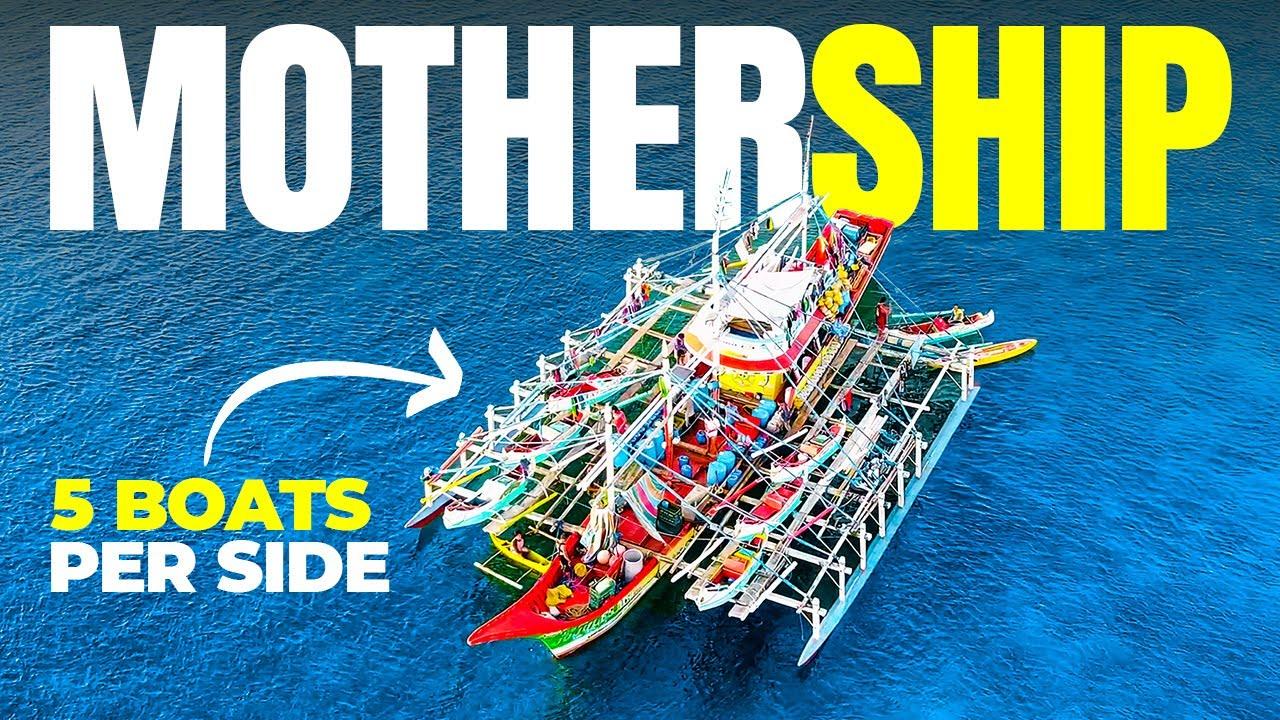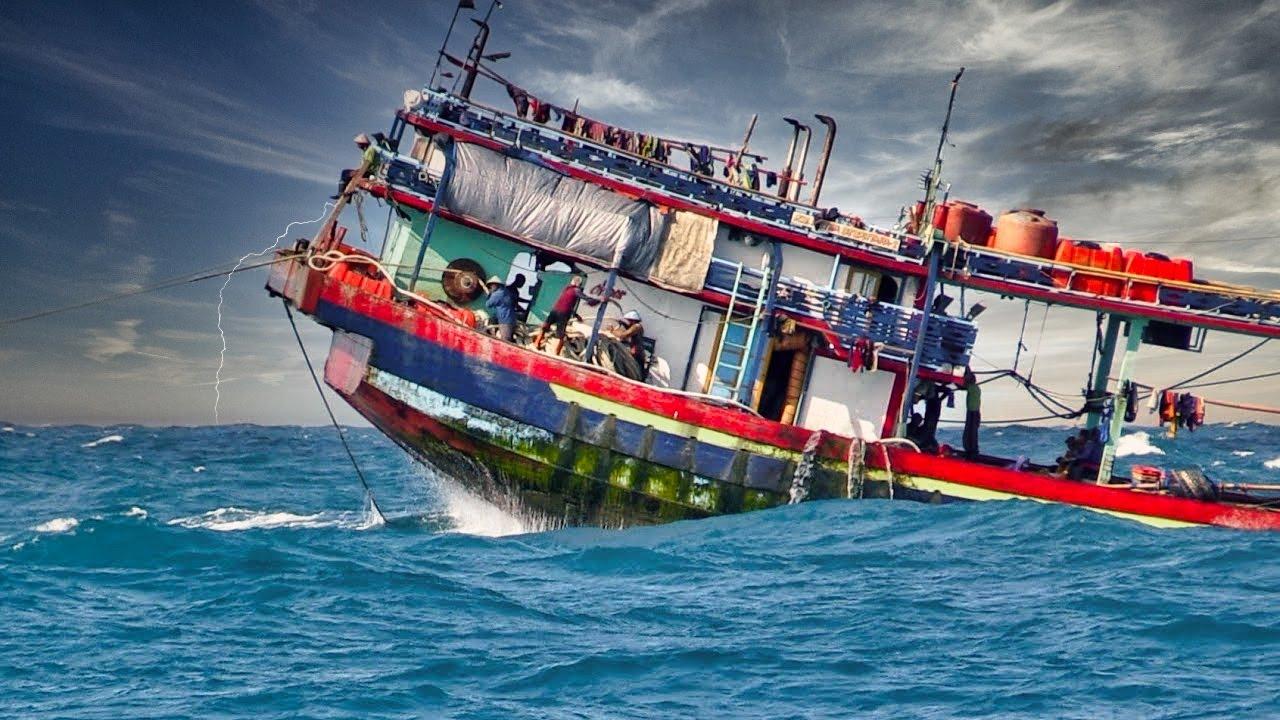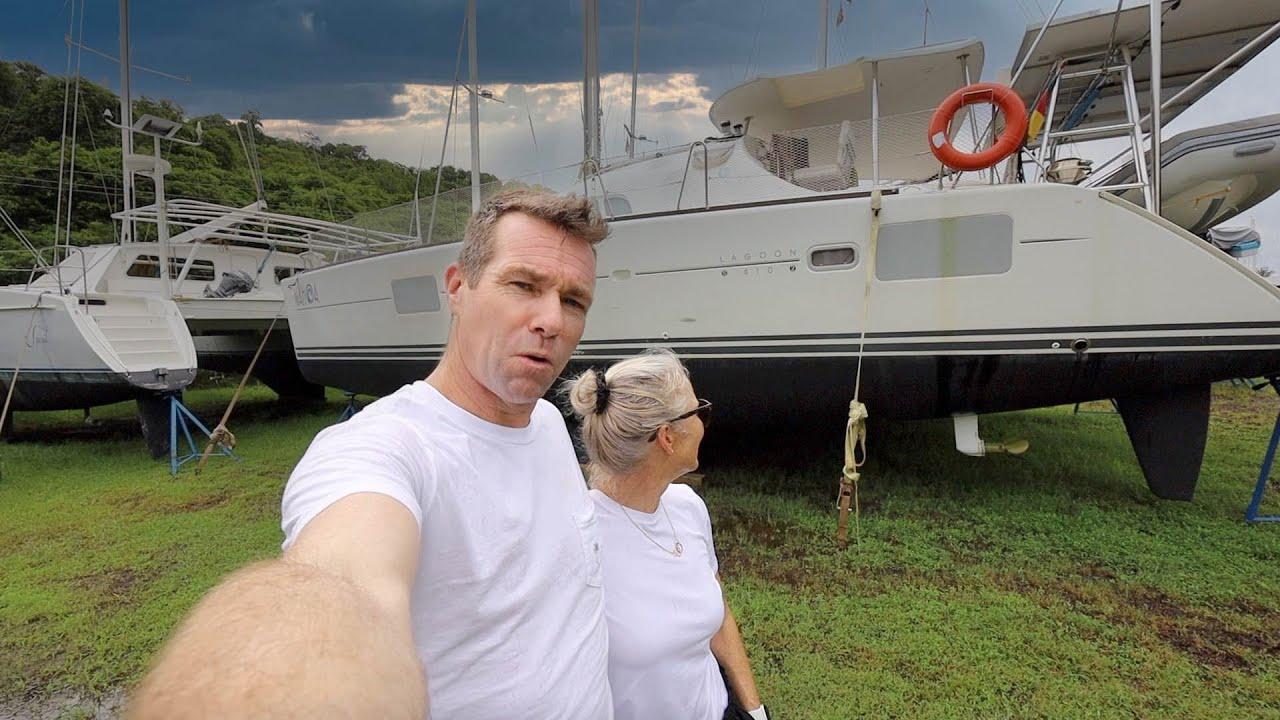Welcome to our blog post, where we delve into the fascinating topics discussed in the YouTube video titled "Only in the Philippines!" In this creative yet neutral exploration, we will take a closer look at the remarkable outrigger canoes and the people who call them home. With a sense of adventure and a desire to sail around the world, Ben and Ashley embarked on an extraordinary mission, leaving behind their belongings and setting off on an incredible journey. As they reached the Philippine coastline, they were introduced to a whole new world; from the captivating sunset to the exotic aromas and the fast-paced boats that zoomed by. Join us as we uncover the intriguing stories behind these massive fishing vessels that venture out to sea for weeks at a time. And don’t forget to subscribe to follow Ben and Ashley’s captivating adventure, as they continue their quest to sail around the world.
– Introduction: Discovering the Philippine Outrigger Canoes – Unique Living and Fishing on the Boats
In the Philippines, there is a unique way of living and fishing that can only be found in this beautiful country. Outrigger canoes, massive boats that roam the Philippine coastline, are home to a community of people who spend weeks at a time on these traditional fishing vessels. Imagine, 17 people living and sleeping on one boat, navigating the open sea together.
During our journey, we came across these incredible outrigger canoes as we sailed towards the Philippines. Curious to learn more, we quickly realized that these boats hold a whole new world of adventure. As we pulled into our first island on the Philippine coastline, we were greeted with exotic smells, new faces, and these crazy-looking boats that would speed past us. Intrigued, we made fast friends with one of the locals who invited us onto his boat.
On board, we discovered that these fishing boats venture out for weeks or even a whole month at a time. They brave the open waters, relying on a 16-horsepower engine to power their journeys. Each morning, they set out to catch the freshest fish, with lines dragging behind the boat. We learned that fishing is most successful in the morning when the fish come to the surface, finding relief from the heat of the day.
These outrigger canoes are not just for leisurely cruising; they are part of a fishing operation that carries about ten smaller boats, each equipped with its own set of fishing lines. These smaller boats are sent out to catch as many mahi tuna or blue marlin as possible, with each boat bringing back an astonishing amount of fish. In just three weeks, these boats can catch over 300 mahi tuna, weighing approximately three kilos each. It’s an immense amount of seafood that supports the local fishing industry and provides fresh food for many families.
Only in the Philippines can you witness the awe-inspiring sight of these massive outrigger canoes and the community of people who call them home. It’s a testament to the ingenuity and resilience of the Filipino people, who have crafted a unique way of living and fishing that has withstood the test of time. As we continue our journey halfway around the world, we are grateful for the opportunity to discover such fascinating traditions and share them with you.
– Insights into the Philippine Fishing Boats: Impressive Size, Engine Power, and Fishing Techniques
Insights into the Philippine Fishing Boats: Impressive Size, Engine Power, and Fishing Techniques
We’d seen these massive outrigger canoes as we sail towards the Philippines and we had no idea of what they were or who lived on them, how many people on board saving the people’s 17 and they all sleep in here. After three days at sea, we pulled into the first island we saw on the Philippine coastline. It was a whole new world, with exotic smells, new faces, and crazy-looking boats that would do drive-bys full speed.
On one of these crazy-looking boats, we made quick friends with one of the guys. He was kind enough to show us around the boat and provide insights into the fishing practices. The boat we boarded was a traditional fishing boat, and they go out for around three weeks to a month. The boat had a small Honda engine with 16 horsepower. It was fascinating to see their fishing gear, which included long lines with pieces of tuna as bait. These lines would be trailed behind the boat for 24 hours a day to catch fish. They mentioned that they fish in the mornings when the fish come to the surface due to cooler temperatures.
| Boat Type: | Traditional outrigger canoe |
| Engine Power: | 16 horsepower |
| Fishing Duration: | Three weeks to a month |
| Fishing Method: | Long lines with baited hooks |
| Estimated Catch: | 300+ mahi in three weeks |
The fishing boats we encountered were part of a larger “mother ship” that carried around ten smaller boats. Each small boat would set out to catch as many mahi tuna or blue marlin as possible. Each small boat would typically catch around 1,000 kilos of fish, resulting in a substantial catch for the entire fleet. It was fascinating to witness their fishing techniques and learn about their impressive catch sizes.
– Recommendations for Learning from the Philippine Fishermen: Understanding the Fishing Schedule and Maximizing Catch
When it comes to learning from the Philippine fishermen, understanding their fishing schedule and maximizing catch, there are a few recommendations worth considering:
- 1. Study and Observe their Fishing Schedule: Take the time to understand the fishing schedule of the Philippine fishermen. As mentioned in the video, the best time to fish is in the morning when the fish come to the surface due to cooler temperatures. By keeping your fishing lines out longer during this period, you can increase your chances of catching more fish. Avoid fishing during the day when it’s too hot as this can cause the fish to go deeper offshore.
- 2. Know the Techniques and Tools: Familiarize yourself with the techniques and tools used by the Philippine fishermen. They utilize traditional fishing boats and employ techniques such as using baited lines to catch fish like tuna and marlin. By learning and implementing these techniques, you can enhance your fishing skills and potentially improve your catch. Remember, it’s not just about the quantity, but also the quality of the catch.
– Exploring the Mothership Strategy: Unveiling the Massive Catch Potential of Multiple Boats
In the beautiful waters of the Philippines, we encountered something truly extraordinary – massive outrigger canoes that held a world of mystery within them. Curiosity got the better of us as we approached these boats and discovered that they were not just ordinary vessels, but homes to a fascinating community of people. With 17 individuals living together on board, these boats were truly a sight to behold.
As we befriended one of the locals, Ben, he graciously invited us on board his boat to give us a closer look at their way of life. We were amazed to learn that these boats can go out to sea for three weeks to a month at a time for fishing expeditions. Each boat has a small, humble engine – like a little Honda with 16 horsepower – which is used to navigate the vast expanses of the ocean.
The most astonishing part was the mothership strategy that they employed. The mothership carries around ten smaller boats, each manned by a dedicated team of fishermen. These boats set out to catch as many mahi tuna or blue marlin as possible, using fishing lines rather than nets. The catch potential was mind-boggling – with each small boat hauling in 1,000 kilos of fish, and ten boats working together, they could amass a staggering amount of fish in just a few weeks.
It was fascinating to witness the camaraderie among the fishermen and the sense of teamwork that prevailed on these boats. They had a deep understanding of the ocean and its patterns, knowing that the best time for fishing was early in the morning when the fish would come to the surface. They taught us that patience was key, and that keeping the fishing lines out longer during the cooler parts of the day would yield a greater abundance of fish.
The experience on these boats was a true eye-opener, revealing the immense catch potential of the mothership strategy. It was a testament to the resourcefulness and resilience of the Filipino fishermen, who have mastered the art of sustainable fishing for generations. Only in the Philippines could we have stumbled upon such a unique and awe-inspiring sight, showcasing the harmonious relationship between man and sea. In conclusion, our journey to the Philippines opened our eyes to the unique and fascinating culture that can only be found in this incredible country. From the moment we set foot on the Philippine coastline, we were greeted with breathtaking sights, exotic smells, and intriguing faces. But perhaps the most captivating aspect of our experience was the astonishing outrigger canoes and fishing boats that dotted the waters.
Meeting the people who live on these massive fishing boats was an unforgettable experience. We had the opportunity to see firsthand their way of life, spending weeks at a time on these boats as they venture out into the open waters to catch fish. Their dedication and hard work was truly awe-inspiring.
But more than just the sheer size and function of these boats, it was the stories and traditions behind them that fascinated us. We learned about their fishing techniques, using handmade lines and hooks instead of nets, and the remarkable quantity of fish they’re able to catch.
As we sailed on, we couldn’t help but be in awe of the resilience and resourcefulness of the Filipino people. Their ability to adapt and thrive in such unique circumstances is truly remarkable. It’s no wonder that the Philippines is a place like no other.
So as we continue on our voyage around the world, we carry with us the memories and lessons we learned in the Philippines. From the undeniable beauty of the islands to the incredible hospitality of the people, this country has left an indelible mark on us.
We invite you to subscribe and join us as we continue on our adventure, uncovering the wonders and extraordinary moments that can only be found in the corners of the globe. Until then, mabuhay and see you in the next destination!


